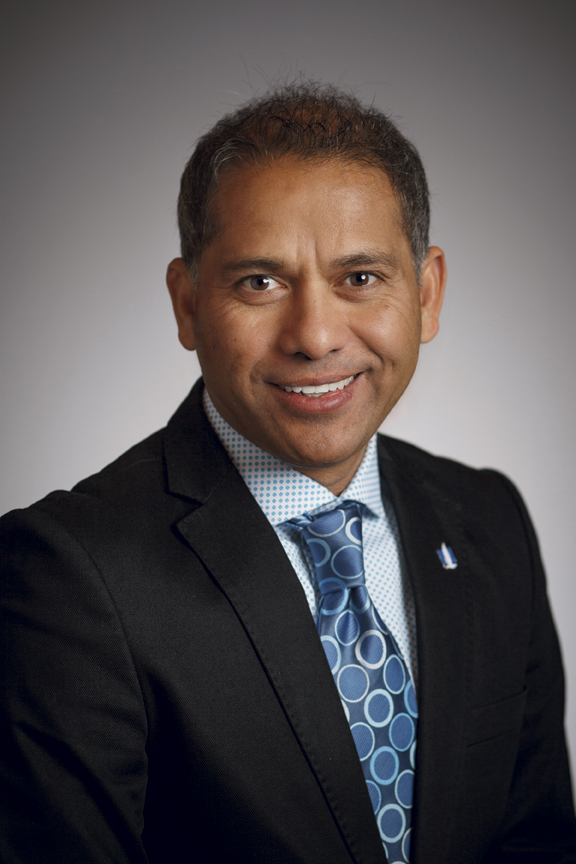SELF-FUNDED MEDICAL PLANS AND STOP LOSS
Innovation on the front lines of cost containment
By Thomas A. McCoy, CLU
A self-funded medical plan represents the epitome of a partnership effort among the benefits broker, an employer and the stop-loss insurer backstopping it all. For an employer to self-fund in the face of relentlessly rising medical costs is both an opportunity and a challenge.
If self-funding were not a significant opportunity, it would not have grown to the point where, according to the 2019 Kaiser Family Foundation Employer Health Benefits Survey, 61% of all workers’ health insurance is provided in a plan that is either fully or partially self-insured; even for firms with three to 49 employees, Kaiser estimates that 21% of employees are either fully or partially self-insured.

—John Thornton
Executive Vice President, Sales and Marketing
Amalgamated Life Insurance Company
Self-funding enables an employer to take greater control over its claims management and save on premiums, taxes and fees. Still, notes John Thornton, executive vice president, sales and marketing, of Amalgamated Life Insurance Company, “Self-funding isn’t right for every organization. A company must be in the financial position to absorb the risk. But with the right stop-loss coverage, based on a company’s employee demographics and medical claims history, the risk can be contained.
“Also, by utilizing an experienced third-party administrator to alleviate the burden of claims processing and adjudication and ensure regulatory compliance, employers can achieve the full value proposition of self-funding,” Thornton says. Amalgamated sister company AliCare serves as its third-party administrator (TPA), managing medical claims reviews.
Amalgamated has been providing medical stop-loss coverage for self-funded medical plans since 2007. It relies on brokers who concentrate on the self-funded market. “Our sales of medical stop loss have been steadily increasing,” says Thornton.
“The volatility in the market, the spiraling costs of specialty drugs and concerns associated with the coronavirus are definitely making more plan sponsors look more closely at how they are funding their medical plan and their stop-loss coverage,” he says.
Nationwide Insurance has been providing stop-loss coverage for medical plans for 15 years, and its stop-loss business has been growing at a double-digit rate since 2010. It writes the business through eight managing general underwriters (MGUs) that provide a market for stop loss throughout the country. Brokers can access Nationwide’s stop-loss coverage through these MGUs.
“Brokers play a crucial role for employers considering a transition to self-funding,” says Syed Rizvi, vice president, specialty insurance for Nationwide. “Along with our MGU partners, we support and inform brokers about our stop-loss offerings through educational materials, webinars, broker forums and white papers.

—Syed Rizvi
Vice President, Specialty Insurance
Nationwide
“Our MGU partners also lend their expertise via joint consultations with employers to review stop-loss options, including captive-funding solutions. It is important for employers to understand the benefits of the stop-loss coverage, including claims transparency,” says Rizvi.
Greg Sullivan, senior vice president of strategy at stop-loss carrier HM Insurance Group, points out that brokers can take advantage of basic and continuing education courses on self-funding and stop loss offered by administrators and insurance companies.
“Self-funding is governed by ERISA (the Employee Retirement Income Security Act of 1974) rather than state law from a purely self-funded health plan perspective,” Sullivan says. “There are a lot of aspects to it that the broker ought to be aware of—for example, the bank account, how plan assets are allowed to be handled, etc. Stop-loss protection is governed by state law, which also comes with state variations in what is allowed.”
Andrew Orear, vice president, stop-loss sales, at Reliance Standard, says that for brokers who have not utilized self-funding with their clients, “the primary obstacle is the ability to obtain large claim data for fully insured employers. Many carriers for fully insured plans will not release this data, which makes underwriting a challenge.”
The success of self-funding for medical plans, and for fully insured plans as well, ultimately turns on efforts of cost containment. Stop-loss company executives cite the trend of rising prescription drug costs, particularly specialty drugs, as a key challenge.
“We try to address the rising cost of specialty prescription drugs through partnerships between our MGUs and best-in-class cost containment vendors,” says Rizvi. “Key actions include early identification of high cost trends and access to a variety of services, including nurse case managers, to review and assist with claims.”
Orear says, “Pursuing cost containment opportunities for all medical costs is imperative. We are taking underwriting precautions when it comes to high-cost prescription drugs. We can’t limit the benefits for a particular high-cost drug, so for the time being, it is about identifying those claims early. We also have access to cost containment resources that can help manage costs at the time of a claim.”
Thornton says one strategy Amalgamated has used to manage specialty drug costs has been to align with a specialty drug cost management service, Payer Matrix. This arrangement, he says, provides its employer clients with access to a case management model.
“It helps them reduce costs by aligning with primary, secondary and tertiary payer options,” he adds. “It leverages data pertaining to alternate funding and cost savings programs. Organizations that are using a specialty drug cost management program are realizing average cost savings of 30% on their specialty drug costs,” he says.
Sullivan says, “With the introduction of new drugs and the fact that their costs are so high, it is important for employers to make sure that their stop-loss policy mirrors the underlying plan’s design with regard to whether a claim is eligible for reimbursement. I do know of at least one major carrier in the marketplace that is not covering some of the new drugs, and I have to wonder if the broker and the employer are aware of the gap in coverage that now exists.”
Thornton says that for catastrophic medical claims over $500,000, employers are looking for new strategies to mitigate risks and contain cost, “such as making sure their specific stop loss offers a flexible claims basis and a wide range of run-in, run-out and paid options, and that their aggregate stop-loss coverage provides an adequate corridor and liability limits.”

—Andrew Orear
Vice President, Stop-Loss Sales
Reliance Standard
Orear cites another cause of rising medical costs which stop-loss carriers must address. “Many hospitals and physicians indicate they lose money treating Medicare and/or Medicaid patients since payments under these programs are below the cost of providing care. Thus, providers subsidize these losses by charging more to the commercial market. Since Medicare and Medicaid enrollments are expected to increase due to increased usage by the Baby Boomer generation, the commercial market should expect higher costs in the future.
“To combat this,” Orear continues, “we have seen an increase in reference-based pricing plans, which price claims in relation to a predetermined percentage of Medicare amounts in lieu of the traditional PPO (preferred provider organization) discounts. The growth of these plans and acceptance among providers is still very much in the early stage of development.”
Stop-loss carriers limit a self-funded employer’s exposures on both a specific (per individual) and aggregate (total workforce claims) basis, depending on the individual employer’s risk tolerance. Nationwide’s coverage features include group captives, level funding and reference-based pricing. Other options include retrospective premium refunds, run-in/run-out coverage and laser options (assigning a different specific deductible for one individual whose claims are likely to exceed the regular specific deductible).
As complex as some of the options provided by stop-loss carriers might sound, they have the simple purpose of tailoring the employer’s risk tolerance to the likely medical costs of the individuals in its workforce.
At Reliance Standard, says Orear, “We offer a wide variety of choices. We allow employers with as few as 50 lives with a specific deductible down to as low as $25,000 to buy stop loss. We offer advance funding features on the specific and aggregate, which protect the self-funded plan’s cash flow. We educate the brokerage community on various options such as bundled vs. unbundled, 12/24 vs. 24/12 contracts, and the importance of mirroring the plan document.”
He explains that Reliance Standard’s stop-loss contract also includes a “no mandatory lasering at renewal” feature. “This means that once we write a case, when it comes up for renewal, we are not allowed to make a renewal offer with a different deductible for a claimant based on our knowledge of their condition. This also comes with a renewal rate cap so the carrier can’t build the entire cost of the laser into the renewal premium.”
Looking ahead, Orear foresees increased migration by self-funded employers to administrators that provide complete data, including case management notes, trigger diagnosis, precertification/preauthorization and individual paid claim services. “This data is crucial to help self-funded plans make educated decisions on renewal options and identify opportunities to pursue cost containment,” he says.
Other trends on the horizon, Orear says, include carving out Pharmacy Benefit Manager (PBM) and prescription drug administration, and medical tourism—across state and national boundaries. “The Public Employers Health Plan (PEHP) in Utah is incenting employees to travel to Mexico to obtain certain specialty medications,” he says.
Rizvi also is watching the potential for stop-loss expansion beyond geographic boundaries. “The Department of Labor’s (DOL) ruling in June 2018 allowing related employers to form Association Health Plans (AHPs) across state lines may provide an opportunity to offer self-funded solutions. We are watching developments related to this ruling as it could help small employers, including self-employed working owners, to pool into associations to access stop-loss coverage. The adoption of this DOL ruling will likely also depend on individual state regulations allowing for AHPs,” says Rizvi.
An employer’s decision to self-fund is not made lightly. Usually, says Thornton, “it is made after thorough discussions involving its chief financial officer, human resources department, accountant and benefits broker or advisor.” Once the decision to self-fund is made, most employers continue to self-fund year after year, stop-loss carrier executives say.
For more information:
Amalgamated Life Insurance Company
www.amalgamatedlife.com
HM Insurance Group
www.hmig.com
Nationwide
www.nationwide.com
Reliance Standard
www.reliancestandard.com
The author
Thomas A. McCoy, CLU, is an Indiana-based freelance insurance writer.






